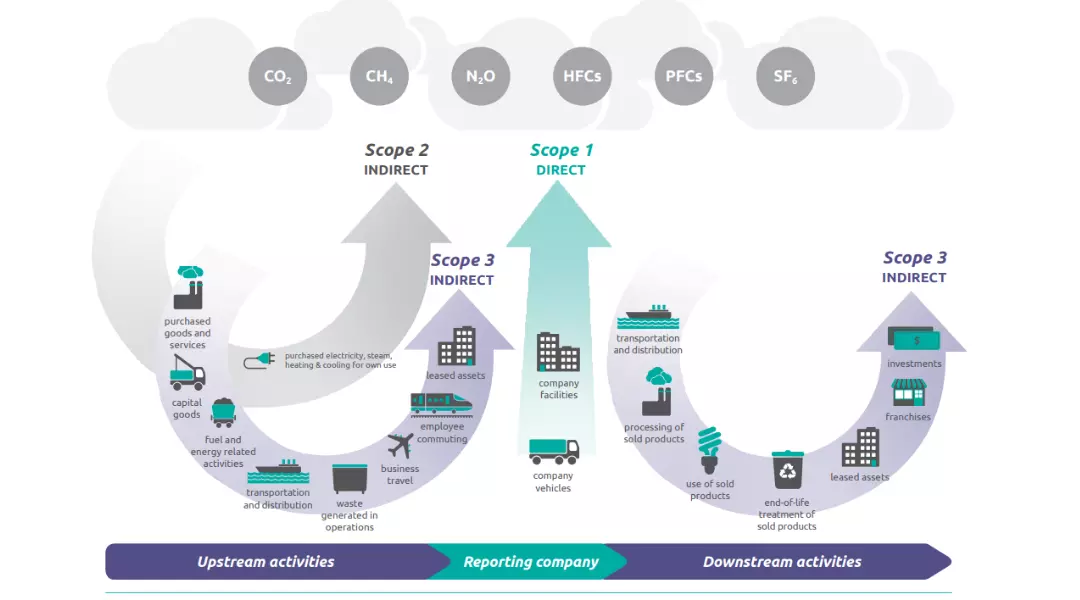Carbon neutrality and net zero emissions are two terms that are often used interchangeably, but there are some important differences between them. Carbon neutral organizations evaluate and reduce CO2 emissions and compensate for them by reducing emissions elsewhere or removing CO2 from the atmosphere through carbon offsetting. Net Zero means a company reduces absolute emissions across its whole supply chain to limit global temperature increases. The Science Based Targets initiative has set out the world’s first Net Zero standard. Both terms are essential parts of emissions mitigation work to combat climate change.
Read moreDirect and indirect greenhouse gas (GHG) emissions
Greenhouse gas (GHG) emissions can be categorized as direct emissions or indirect emissions.
Direct GHG emissions (also known as Scope 1 emissions in the GHG Protocol) are emissions that are produced directly by sources that are owned or controlled by an organization. Examples of direct GHG emissions include emissions from combustion of fuels in boilers or vehicles owned by the organization, and emissions from chemical processes in manufacturing facilities.
Read moreThe GHG Protocol Corporate Accounting and Reporting Standard
The GHG Protocol Corporate Accounting and Reporting Standard (the GHG Protocol) is a widely recognized framework for companies to measure and manage their greenhouse gas (GHG) emissions. It was developed by the World Resources Institute (WRI) and the World Business Council for Sustainable Development (WBCSD), and it provides a consistent and transparent method for companies to quantify and report their GHG emissions, as well as to identify opportunities to reduce those emissions.
Global warming potential (GWP) of greenhouse gases.
Different greenhouse gases have different warming potentials, meaning that they trap different amounts of heat in the atmosphere. Carbon dioxide equivalent (CO2e) is a metric used to compare the emissions from various greenhouse gases (GHGs) based on their potential to contribute to global warming.
Read moreGreenhouse gases (GHGs)
Greenhouse gases (GHGs) are gases that trap heat in the Earth’s atmosphere and contribute to global warming and climate change. They act like a blanket around the Earth, trapping heat that would otherwise escape into space. Some examples of GHGs include carbon dioxide, methane, and nitrous oxide.
Read moreISO 14064-1 Standard
ISO 14064-1 Standard is part of a series of ISO 14064 standards that focus on GHG management and accounting. The standard provides a comprehensive framework for organizations to quantify, monitor, report, and verify their greenhouse gas emissions and removals. By following the guidance provided in the standard, organizations can more accurately measure their GHG footprint, identify opportunities for emissions reductions, and contribute to global efforts to address climate change.
Read moreGHG Protocol Standards Update Process
GHG Protocol, a leading authority on greenhouse gas (GHG) accounting, is currently in the process of updating its corporate standards and guidance. These updates aim to provide businesses with an effective and credible accounting foundation to measure, plan, and track progress toward science-based and net-zero targets. In this article, we address some frequently asked questions about the GHG Protocol standards update process.
Read more





